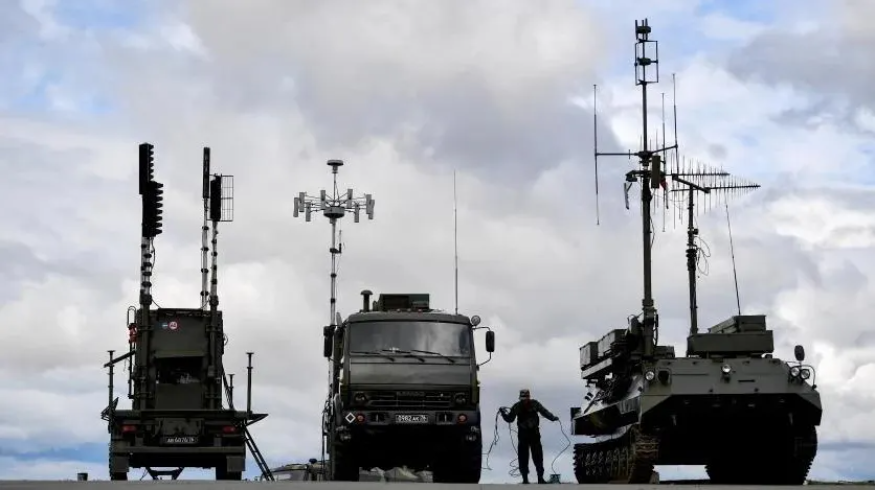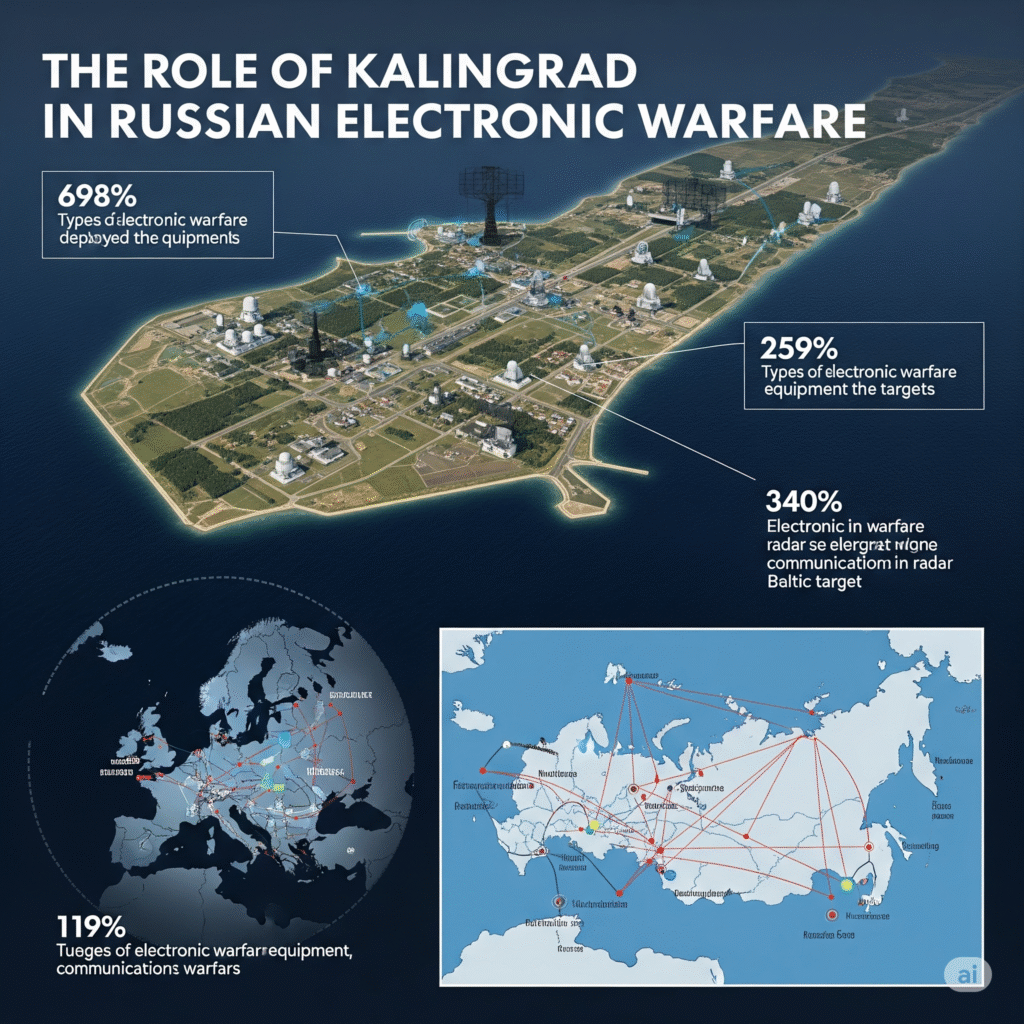As Russian GPS jamming escalates risks for civilian aircraft, NATO may retaliate by targeting military bases in Kaliningrad. Here’s how the alliance is preparing for potential escalation.
NATO May Strike Kaliningrad in Response to Russia’s Escalating GPS Jamming Campaign

Overview
NATO is facing a mounting crisis as Russian electronic warfare operations from Kaliningrad continue to disrupt GPS signals across Eastern Europe. The persistent jamming not only poses a risk to military coordination but also threatens civilian aviation and maritime operations, increasing the likelihood of a catastrophic incident.
With several airlines forced to reroute flights or cancel operations altogether, and commercial vessels reporting positional loss in the Baltic Sea, NATO member states are actively discussing countermeasures. Military analysts now believe a retaliatory strike on Russian jamming installations in Kaliningrad may be necessary if a civilian disaster occurs.
1. Introduction: A New Front in the Russia-NATO Conflict

Kaliningrad, a Russian exclave wedged between NATO members Poland and Lithuania, has emerged as a hotspot in the ongoing standoff between NATO and Russia. As tensions rise globally due to the war in Ukraine and hybrid warfare tactics, electronic aggression through GPS interference is adding a dangerous new layer.
NATO views these actions as deliberate provocations, with the potential to lead to open conflict if civilian lives are lost.
2. What Is GPS Jamming?
GPS jamming is the intentional disruption of global positioning systems, which military and civilian infrastructure heavily rely upon. Jamming can disable navigational abilities for aircraft, ships, and ground vehicles, leading to operational delays or potentially fatal accidents.GPS jamming is the intentional disruption of GPS signals by overwhelming them with powerful radio signals. This prevents GPS receivers from accurately calculating their position or time. It can be used to disrupt navigation and tracking, obscure movements, protect sensitive operations, or cause disruption to both military and civilian navigation systems.
Here is an image illustrating GPS jamming:

Effects of GPS Jamming:
| Impacted Sector | Risks Involved |
|---|---|
| Civil Aviation | Flight rerouting, aborted landings |
| Maritime Transport | Positional inaccuracies, collision risk |
| Military Operations | Disrupted coordination, target error |
| Emergency Services | Delayed response times |
3. The Role of Kaliningrad in Russian Electronic Warfare

Russia has positioned multiple electronic warfare (EW) systems in Kaliningrad, including:
- Murmansk-BN: Long-range radio jamming system
- Borisoglebsk-2: Tactical EW platform for battlefield disruption
- Okunevo Antenna Arrays: High-frequency installations for signal suppression
These systems have the capacity to interfere with GPS signals across the Baltic states, northern Poland, and southern Finland—many of which are NATO territories.
Strategic Importance of Kaliningrad
Kaliningrad is heavily militarized and serves as a forward base for:
- Ballistic missiles
- Anti-aircraft systems (S-400)
- Naval units in the Baltic Sea
Its geographical location enables Russia to quickly project power and interfere with NATO operations.
4. NATO’s R-Mode Navigation Response
To mitigate the effects of GPS jamming, NATO is fast-tracking the implementation of R-Mode (Ranging Mode), a terrestrial-based backup navigation system for ships and aircraft. It uses radio beacons instead of satellite signals to triangulate location data.
However, experts remain skeptical about its reliability in high-traffic zones or during severe weather events.
R-Mode vs. GPS
| Feature | GPS | R-Mode |
| Signal Source | Satellite-based | Land-based radio beacons |
| Accuracy | High | Moderate |
| Vulnerability | Susceptible to jamming | More resilient to EW |
5. Civilian and Commercial Impact
Several commercial airlines, including Finnair, have suspended routes to Estonia due to the ongoing GPS interference. Pilots have reported sudden losses of positional data, leading to mid-air rerouting and emergency landing procedures.
Additionally, commercial vessels in the Baltic Sea have reported inconsistent navigational readings near Kaliningrad, raising alarm within shipping companies and port authorities.
6. Political and Military Repercussions
NATO officials have privately acknowledged that the alliance is preparing a potential military response if a major civilian incident occurs. This could include:
- Electronic counterattacks (cyber warfare)
- Disabling jamming installations via drone strikes
- Full-scale missile attacks on Kaliningrad EW hubs
However, any such strike risks massive escalation with Russia, which would likely interpret it as an act of war.
7. Expert Reactions and Strategic Forecasts
German Defense Minister Annegret Kramp-Karrenbauer stated:
“NATO cannot remain passive while civilians are endangered. The risk of miscalculation is increasing by the day.”
Baltic military analyst Eero Laanemets:
“We are seeing GPS jamming used not just as a military tool but as a geopolitical pressure tactic. It’s hybrid warfare at its most dangerous.”
Strategic Forecast
- Short-term: Increased NATO surveillance flights over the Baltic
- Mid-term: Possible countermeasures deployed on NATO warships
- Long-term: Deployment of missile defense systems and offensive EW units in Poland and Lithuania
Conclusion
As tensions rise between NATO and Russia, the ongoing GPS jamming from Kaliningrad could become the spark that ignites a larger conflict. NATO’s response will likely define the trajectory of East-West relations in the coming months. Whether through strategic deterrence or direct military action, the alliance is now on high alert to protect both its sovereignty and civilian populations.
FAQS
Q1: What is Kaliningrad and why is it important to NATO? Kaliningrad is a Russian territory between Poland and Lithuania. It houses advanced military and EW systems, making it a strategic threat to NATO’s eastern flank.
Q2: What makes GPS jamming so dangerous? It interferes with the satellite-based navigation used by civilian aircraft and ships, increasing the chances of mid-air or sea collisions.
Q3: Can NATO legally strike Kaliningrad? Under Article 5 of the NATO treaty, an attack on one member can justify collective defense. However, any strike would require consensus and proof of hostile intent.
Q4: What alternatives exist to GPS? NATO is deploying R-Mode navigation as a backup, but it’s less accurate and not yet fully operational.
Q5: Has Russia acknowledged the GPS jamming? No official admission has been made. Russia typically denies involvement in electronic warfare activities.
